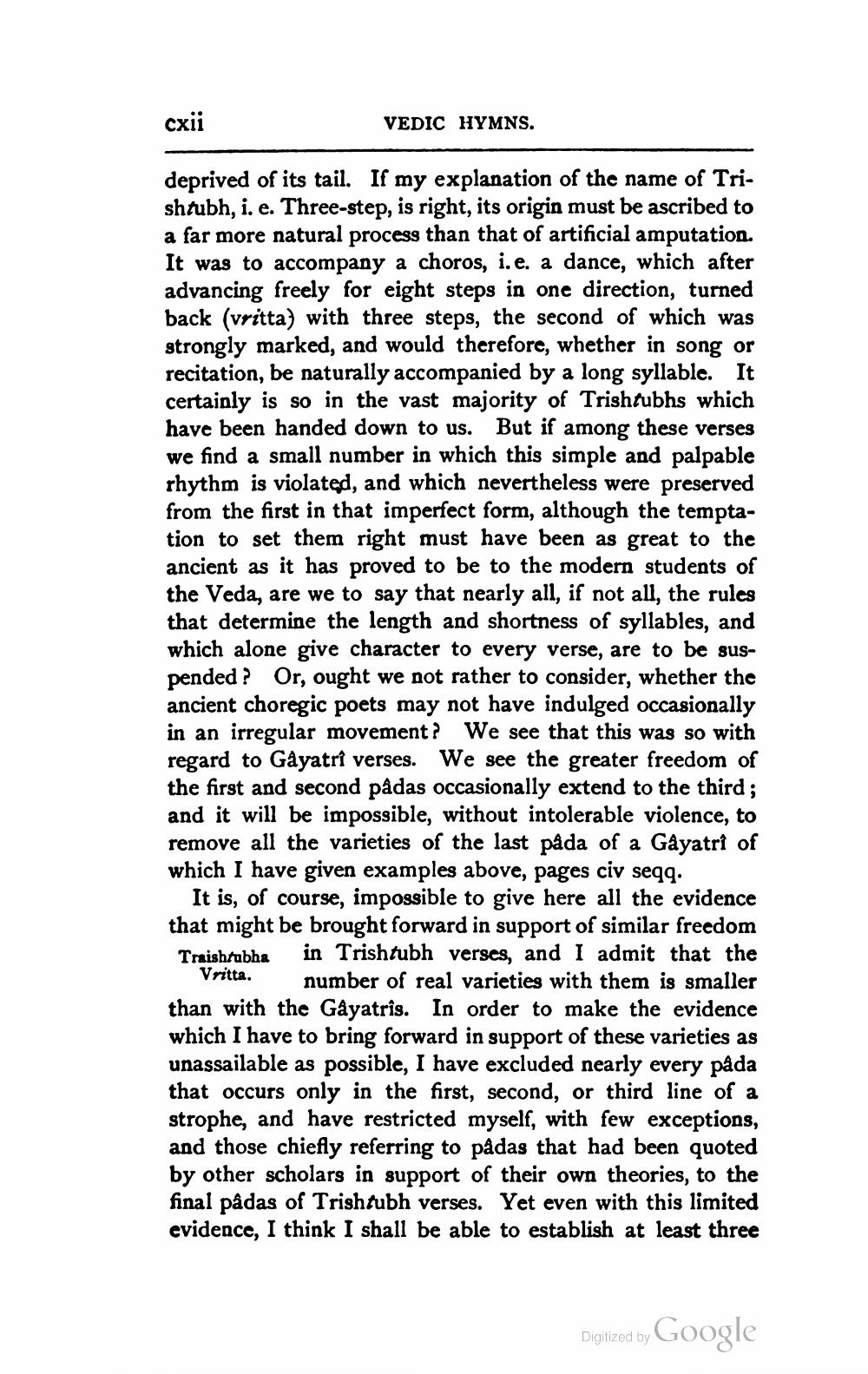________________
cxii
VEDIC HYMNS.
deprived of its tail. If my explanation of the name of Trishtubh, i.e. Three-step, is right, its origin must be ascribed to a far more natural process than that of artificial amputation. It was to accompany a choros, i.e. a dance, which after advancing freely for eight steps in one direction, turned back (vritta) with three steps, the second of which was strongly marked, and would therefore, whether in song or recitation, be naturally accompanied by a long syllable. It certainly is so in the vast majority of Trishtubhs which have been handed down to us. But if among these verses we find a small number in which this simple and palpable rhythm is violated, and which nevertheless were preserved from the first in that imperfect form, although the temptation to set them right must have been as great to the ancient as it has proved to be to the modern students of the Veda, are we to say that nearly all, if not all, the rules that determine the length and shortness of syllables, and which alone give character to every verse, are to be suspended? Or, ought we not rather to consider, whether the ancient choregic poets may not have indulged occasionally in an irregular movement? We see that this was so with regard to Gayatri verses. We see the greater freedom of the first and second pâdas occasionally extend to the third ; and it will be impossible, without intolerable violence, to remove all the varieties of the last pada of a Gayatri of which I have given examples above, pages civ seqq.
It is, of course, impossible to give here all the evidence that might be brought forward in support of similar freedom Traishtubha in Trishtubh verses, and I admit that the Vritta.
number of real varieties with them is smaller than with the Gayatris. In order to make the evidence which I have to bring forward in support of these varieties as unassailable as possible, I have excluded nearly every pada that occurs only in the first, second, or third line of a strophe, and have restricted myself, with few exceptions, and those chiefly referring to pâdas that had been quoted by other scholars in support of their own theories, to the final pâdas of Trishtubh verses. Yet even with this limited evidence, I think I shall be able to establish at least three
Digized by Google




